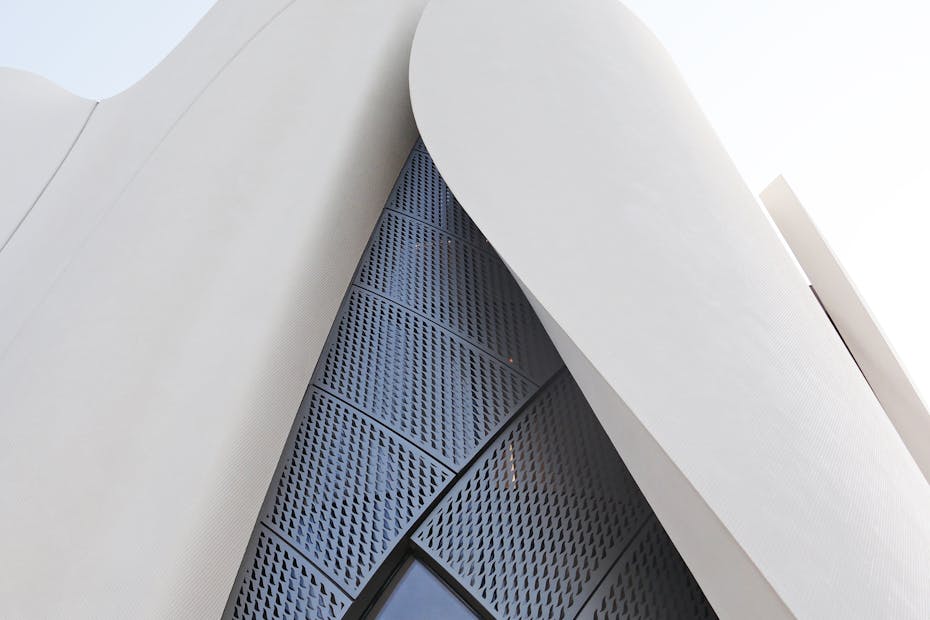Introduction: Blurring the Line Between Space and System
In the digital age, the way we experience the built environment is undergoing a radical shift. No longer are buildings just inert containers of activity; increasingly, they are interfaces — responsive, data-driven, interactive systems. This emerging domain, known as interface architecture, explores how buildings can behave like devices: sensing, processing, and communicating. What happens when architecture doesn’t just shelter us, but also interacts with us — like a touchscreen, a dashboard, or even a chatbot?
This article delves into the growing overlap between architecture and technology, examining how buildings function as interfaces between humans, data, and the environment — and the implications for design thinking, user agency, and spatial ethics.
The Rise of Interface Architecture
The term interface architecture refers to architectural design that treats the building as an interactive medium — a surface or system that responds to inputs and produces outputs. It’s a fusion of physical form with digital logic, where the skin of the building, its layout, and even its atmosphere are embedded with sensors, algorithms, or kinetic components.
While “smart buildings” are not a new concept, interface architecture goes beyond automation. It introduces a paradigm in which the building actively communicates — displaying information, adapting to behavior, or transforming based on user engagement.
From Facades to Feedback Systems
One of the most vivid expressions of interface architecture can be seen in responsive façades. These are building envelopes that shift in shape, opacity, or color in response to environmental data — such as sun, wind, or user movement. Examples include:
- Al Bahr Towers in Abu Dhabi, whose kinetic shading system opens and closes like a traditional mashrabiya, based on sun exposure.
- Media façades in cities like Seoul or Tokyo, which act as massive digital canvases that display media based on real-time inputs.
But interface architecture is not just about spectacle. It’s also about feedback. Whether through environmental sensors adjusting ventilation, or walls that change color based on sound levels, the architecture becomes an active participant in how the space is perceived and used.
Paragraph Focus: The Building as a Behavioral Device
Interface architecture forces us to reconsider the behavior of buildings. In traditional design, architecture is a static object; in interface design, it becomes a dynamic system. This shift alters the user’s role from passive occupant to active participant.
Consider a hospital where doors open not only by proximity sensors, but also based on facial recognition tied to patient data — a space designed to manage privacy and access fluidly. Or a library where wall panels adjust their acoustic profile based on real-time occupancy and noise levels. Or a museum that reorganizes its lighting and wayfinding depending on foot traffic and user interests, gleaned from wearable tech.
In all these examples, interface architecture creates a new kind of spatial syntax: one that is co-authored by both human and machine. The building doesn’t just exist; it performs, listens, responds, and in some cases, even learns.
This behavioral layer demands new design disciplines — not just in architecture, but in user experience (UX), interface design, and ethics. Who controls the data? Who defines the thresholds of response? How much should a building adapt before it oversteps its users?

Interface Architecture in Domestic Spaces
The smart home is the most intimate laboratory for interface architecture. Voice-activated lighting, temperature-controlled by phone apps, fridges that track expiry dates — all these elements represent a shift from physical interaction to informational dialogue.
Yet the danger lies in invisible complexity. When everything is mediated through an interface — an app, a device, an algorithm — the clarity of spatial cues can fade. Designers must then consider: how do you maintain legibility in a space that constantly changes?
Interface architecture, in domestic settings, raises crucial questions about trust, privacy, and emotional ergonomics. A room that changes lighting temperature based on circadian rhythm can enhance well-being — but only if it’s designed with empathy, not just efficiency.
Ethics and Agency in Interactive Spaces
With agency comes responsibility. Interface architecture gives buildings power to monitor, respond, and adapt — but also to control. Who decides what a space should do when a certain condition is met? What happens when a building reacts incorrectly, or excludes someone unintentionally?
Designing responsive spaces means acknowledging the politics of interaction. An interface is never neutral — it reflects priorities, assumptions, and often biases.
To navigate this ethically, architects must collaborate with disciplines like:
- HCI (Human-Computer Interaction)
- Behavioral psychology
- Data ethics and cybersecurity
- Critical design theory
These collaborations can ensure that interactive architecture empowers rather than alienates, enhances autonomy rather than enforces behavior.
A New Role for Architects
The rise of interface architecture is changing what it means to be an architect. No longer is the primary task to shape matter alone, but to choreograph systems — data systems, behavioral systems, sensory systems. Architects must now think like experience designers, system integrators, even dramaturgs.
It’s a shift from building forms to designing platforms.
This does not mean abandoning materiality. Instead, it’s an invitation to think of materials themselves as communicative: surfaces that glow, bend, sense, and shift. The interface is not the enemy of tectonics — it is its evolution.
Conclusion: Architecture as Living Dialogue
When buildings act like devices, we enter a world where space is no longer fixed, but negotiated in real-time. Interface architecture challenges the notion of permanence, offering instead a form of living dialogue between humans and environments.
Done well, it can deepen empathy, streamline functionality, and redefine presence. Done poorly, it can overwhelm, confuse, or control.
As designers, we must ask: what do we want buildings to say — and to whom? In answering that, interface architecture becomes not just a trend, but a new chapter in the architectural story — one in which space itself has a voice.
